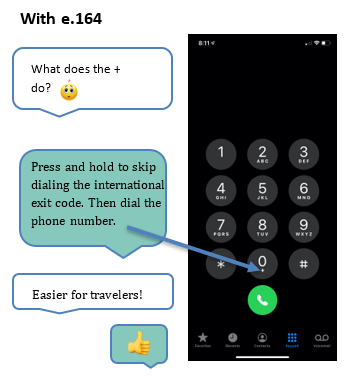
Summary:
Puzzled by the inner workings of international calling? Rather than assuming with a shrug that “it’s all Greek to me,” read through the following guide to see just how simple the process actually is.
“E.T. phone home” is one of cinema’s most famous lines, from a 1980s movie classic. The extra-terrestrial needs help because it’s apparently quite difficult to make an inter-galactic call! In the same vein, a simple international call can be confusing if you’re not accustomed to country-to-country dialing. Here’s a brief explanation that covers the structure of international calling, demystifies dialing patterns and offers some shortcuts.
Telephone number structure
Telephone numbers seem radically different from country to country—some phone numbers in Indonesia are as long as 12 digits, while numbers in New Zealand’s remote Tokelau Islands have only 7 digits. And different countries have different patterns for how they group and format numbers, but all numbers have the same structure, which is a requirement for automatic dialing. That structure is based on the e.164 Numbering Standard, which is the international telephone numbering plan that guarantees a globally unique number.
COUNTRY + NATIONALLY SIGNIFICANT NUMBER
CODE This consists of the area code, plus a subscriber number
Let’s look at some examples:

+1 202 456 1111 The White House (U.S.)
+33 8 92 70 12 39 The Eiffel Tower (France)
+61 2 92 50 7111 Sydney Opera House (Australia)
The + sign before the country code indicates that the phone number is shown in standardized international calling format. If there isn’t a leading “+” the number may be written in a domestic format—which can throw you for a loop when calling from another country.
Dialing internationally
When dialing internationally, you need to tell the telecom network that you are making a call outside your existing country. So, you have to dial what’s called an international prefix or an international exit code. Since countries have different international exit codes, this can be confusing as you travel from country to country.
Here are some international exit code examples:
011 (U.S. and North America)
00 (France and most other countries in Europe)
0011 (Australia)
Putting it together
If you’re in the U.S. and you need to schedule a visit to the Eiffel Tower, you would dial:
011 + 33 + 8 92 70 12 39
If you’re in France and you need to fax the Sydney Opera House, you would dial:
00 + 39 + 06 3996 7700
And if you’re in Australia and you need to reach the White House switchboard, you would dial:
0011 + 1 + 202 456 1111
Making it easier
It’s even more straightforward when you’re dialing from a mobile phone. Take a look at your iPhone or Android keypad. Notice that there is a + sign right under the zero. By firmly pressing and holding the 0 key, the “+” will appear at the top of the keypad, indicating your phone is ready for you to enter an international number. You don’t even have to worry about entering the international exit code.
Or if you’re a Windstream Enterprise OfficeSuite UC® customer with a soft phone, you can forget all that dialing and simply click to call. When you’re using the WE Connect web or mobile app within the U.S., it’s as easy as clicking the phone number or phone icon. As long as your contact directory is correctly set up in the e.164 format discussed above with a + country code format, it’s seamless. You don’t have to dial, and you don’t have to worry about dialing the international access code.
If your memories of placing international calls stir up some anxiety, we understand. But the technology has come a long way, making it easy to transcend borders with international dialing.
